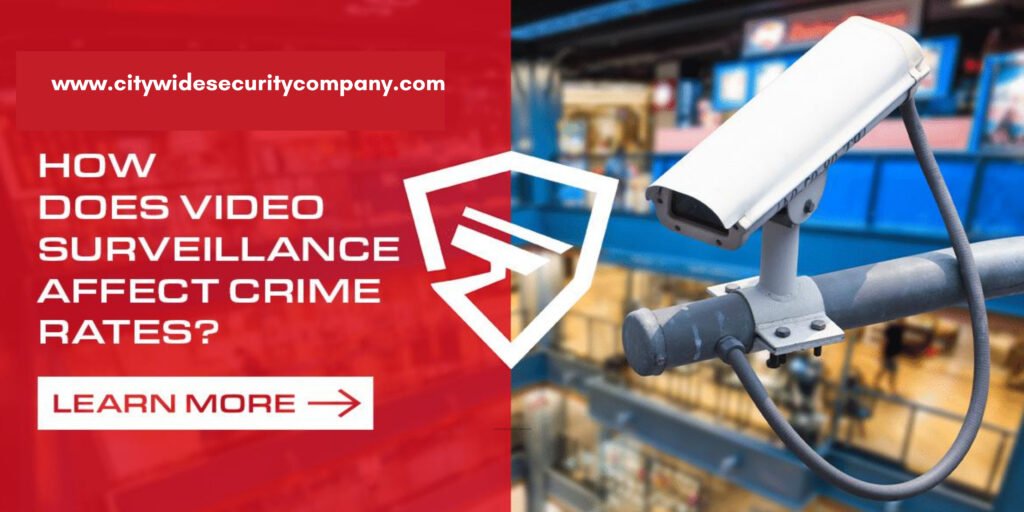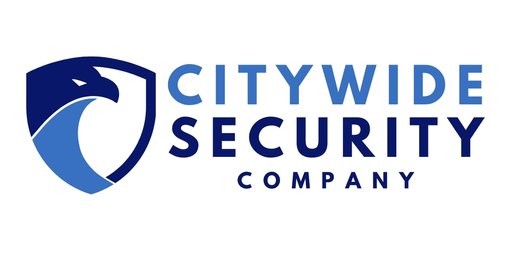Reasons Why Security in Healthcare is Crucial for Patient Safety
 Reasons Why Security in Healthcare is Crucial for Patient Safety
Reasons Why Security in Healthcare is Crucial for Patient Safety
Ensuring security in healthcare facilities is paramount. From protecting patient data to ensuring physical safety, robust security measures are essential. This article delves into the importance of healthcare security, types of threats, and comprehensive solutions, enriched with real-life testimonials, expert opinions, and practical tips.
Understanding Healthcare Security
What is Healthcare Security?
Healthcare Security covers a range of measures designed to protect patients, staff, and sensitive information within healthcare facilities. This includes physical security, cybersecurity, and integrated solutions. Effective healthcare security systems are vital in creating a safe environment, mitigating risks, and ensuring compliance with regulatory standards.
Types of Healthcare Security Threats
Healthcare facilities face a myriad of threats that can compromise safety and operations, requiring comprehensive security measures to protect patients, staff, and sensitive information. Understanding these threats is the first step in developing effective healthcare security solutions.
Physical Threats
Physical threats are among the most immediate and visible dangers in healthcare settings. Theft is a common issue, with hospitals and clinics often targeted for expensive medical equipment, pharmaceuticals, and personal belongings of patients and staff. Vandalism also poses a significant risk, leading to property damage and the disruption of healthcare services. More alarmingly, violence within healthcare facilities is a growing concern. Incidents of assault against healthcare workers and patients can lead to severe injuries and create an atmosphere of fear and insecurity. Implementing robust physical security measures, such as surveillance systems and security personnel, is essential to mitigate these risks and ensure a safe environment for everyone.
Cyber Threats
In the digital age, cyber threats have become a major concern for healthcare facilities. Data breaches and hacking attempts target sensitive patient information, including medical records, billing details, and personal identification. Such breaches can have devastating consequences, from financial losses to a loss of trust among patients. Cybersecurity measures, such as encryption, firewalls, and regular system audits, are crucial in protecting against these threats. Additionally, staff training on recognizing phishing attempts and secure handling of patient data plays a vital role in maintaining cybersecurity. With the increasing digitization of healthcare records, the importance of robust cybersecurity protocols cannot be overstated.
Internal Threats
Internal threats involve risks originating from within the organization. Employee misconduct, such as theft, fraud, or unauthorized access to sensitive areas, can significantly compromise security. For example, a staff member might misuse their access to patient records or steal medical supplies for personal gain. To address these internal threats, healthcare facilities must implement strict access control policies and conduct regular background checks on employees. Moreover, fostering a culture of accountability and ethical behavior among staff can help reduce the likelihood of such incidents. Internal audits and monitoring systems can also detect and prevent misconduct before it escalates.
External Threats
External threats are posed by individuals who are not affiliated with the healthcare facility but can still cause harm. Intruders and unauthorized visitors can disrupt operations, steal property, or even pose a physical threat to patients and staff. For instance, hospitals may encounter individuals attempting to gain access to restricted areas to steal drugs or medical equipment. To counter these threats, healthcare facilities need to establish stringent visitor management systems, including identification checks and surveillance cameras. Security personnel should be trained to recognize and handle potential threats from outside. By maintaining strict control over who enters the facility, healthcare providers can significantly enhance their security posture.
Combating Healthcare Security Threats
Addressing the various threats that healthcare facilities face requires a multi-faceted approach. Combining physical security measures with advanced cybersecurity protocols and robust internal policies can create a comprehensive security framework. Healthcare Security Solutions must be tailored to the specific needs and vulnerabilities of each facility, considering factors such as location, size, and the nature of the services provided. Regular training for staff on security protocols and the latest threats is also essential to keep everyone vigilant and prepared.

The Importance of Ongoing Assessment and Adaptation
Security threats in healthcare are constantly evolving, driven by technological advancements and changing criminal tactics. Therefore, it is crucial for healthcare facilities to regularly assess their security measures and adapt to new challenges. This includes staying informed about the latest security technologies and industry best practices. Regular drills and scenario-based training can also help staff respond effectively to security incidents. By continuously evaluating and improving their security strategies, healthcare facilities can ensure they remain one step ahead of potential threats and maintain a safe environment for patients and staff.
Importance of Security in Healthcare Facilities
Ensuring Patient Safety
Patient Safety is at the core of healthcare security. Robust security measures protect patients from harm and provide peace of mind. For example, in a major hospital, the installation of surveillance systems significantly reduced incidents of violence and theft, enhancing overall safety. Surveillance systems act as a deterrent to potential criminals and provide valuable evidence in the event of an incident. This not only helps in maintaining order but also in resolving any disputes or misunderstandings that may arise. Moreover, having visible security measures reassures patients that their well-being is a priority.
Protecting Sensitive Information
Protecting Sensitive Information is crucial in healthcare. Patient data and medical records must be safeguarded against breaches. For instance, a healthcare facility experienced a potential data breach but mitigated it through advanced cybersecurity protocols, maintaining patient trust and operational integrity. Cybersecurity measures such as encryption, regular system updates, and staff training on data handling practices are essential in protecting this sensitive information. Ensuring that only authorized personnel have access to patient records helps in minimizing the risk of data breaches.
Real-life examples underscore the impact of data breaches. A significant breach at a large hospital led to compromised patient information, highlighting the need for stringent cybersecurity measures. The fallout from such incidents can be severe, including legal consequences, financial losses, and damage to the facility’s reputation. Additionally, patients whose data is compromised may suffer from identity theft or financial fraud, leading to long-term repercussions. Implementing comprehensive cybersecurity strategies helps in maintaining patient trust and protecting the facility from potential threats.
Maintaining a Safe and Secure Environment
A Safe Environment is essential for patients, staff, and visitors. Security in healthcare facilities involves emergency preparedness, secure entry points, and trained security personnel. These measures ensure that everyone within the facility feels secure. Emergency preparedness includes having clear evacuation plans, regular drills, and adequate supplies to handle various crises. Secure entry points with controlled access help in monitoring who enters and exits the facility, reducing the risk of unauthorized individuals causing harm.
Family involvement in patient safety is also crucial. Keeping family members informed about security protocols and involving them in safety measures enhances overall security and trust. For instance, informing family members about visiting hours, emergency procedures, and how to identify legitimate staff can help in preventing potential security breaches. Families can also be an additional layer of vigilance, reporting any suspicious activities or individuals to the authorities. This collaborative approach ensures that the facility remains a safe and welcoming environment for everyone.
Enhancing Overall Security Measures
Enhancing Overall Security Measures in healthcare facilities involves adopting a holistic approach that combines physical security, cybersecurity, and staff training. Physical security measures, such as installing surveillance cameras and alarm systems, are fundamental in deterring potential threats. Additionally, ensuring that all entry points are monitored and controlled helps in managing who has access to different areas within the facility. Regular maintenance and updates of these systems are necessary to keep them effective and operational.
Cybersecurity measures, such as implementing firewalls, using strong passwords, and conducting regular security audits, are essential in protecting patient data. Training staff on the latest security protocols and encouraging a culture of vigilance and accountability are equally important. Staff should be aware of the signs of potential security threats and know how to respond appropriately. Regular training sessions and updates on new security practices help in keeping everyone informed and prepared.
Benefits of Integrated Security Solutions
The Benefits of Integrated Security Solutions are manifold. By combining physical security measures with advanced cybersecurity protocols, healthcare facilities can create a comprehensive security framework that addresses various threats. Integrated systems allow for better coordination and quicker response times in the event of an incident. For example, if a security breach occurs, the facility’s surveillance system can immediately alert security personnel and provide real-time footage of the incident, allowing for swift action.
Furthermore, integrated security solutions often involve advanced technologies such as artificial intelligence (AI) and machine learning (ML). These technologies can enhance security measures by identifying patterns and predicting potential threats before they occur. AI-driven systems can monitor vast amounts of data and detect anomalies that might be missed by human observers. This proactive approach helps in preventing security incidents and ensuring a safer environment for patients and staff.
Engaging Stakeholders in Security Efforts
Engaging Stakeholders in Security Efforts is vital for the success of any security strategy. This includes involving not only the healthcare staff but also patients, their families, and the wider community. Regular communication about the importance of security and the measures being taken can help in fostering a sense of shared responsibility. For instance, holding workshops or information sessions for patients and their families on how to stay safe within the facility can be beneficial.
Additionally, seeking feedback from stakeholders on the effectiveness of security measures can provide valuable insights for continuous improvement. Engaging with the community and local law enforcement can also enhance the overall security of healthcare facilities. By working together, all stakeholders can contribute to creating a secure and welcoming environment for everyone.
Ensuring robust security in healthcare facilities is essential for protecting patients, staff, and sensitive information. By adopting a comprehensive approach that includes physical security measures, cybersecurity protocols, and stakeholder engagement, healthcare providers can create a safe and secure environment. This not only enhances patient safety and satisfaction but also contributes to the overall effectiveness and reputation of the healthcare facility.
Healthcare Security Solutions
Physical Security Measures
Physical security measures are the backbone of healthcare security. These include surveillance systems, security cameras, access control systems, and the presence of security personnel. These measures deter potential threats and ensure quick responses to incidents. For instance, surveillance systems can monitor high-risk areas such as emergency rooms and entrances, providing real-time footage that helps security personnel respond promptly to any suspicious activity. Security cameras placed strategically throughout the facility can help in identifying and preventing potential security breaches.

Another essential aspect of physical security is the implementation of Access Control Systems. These systems ensure that only authorized personnel can enter sensitive areas, such as operating rooms, pharmacies, and data centers. By using key cards, biometric scanners, or even facial recognition technology, healthcare facilities can significantly reduce the risk of unauthorized access and potential internal threats. Moreover, the presence of well-trained security personnel who can handle emergencies and ensure compliance with security protocols is crucial for maintaining a secure environment.
Cybersecurity Measures
Cybersecurity measures are equally important in protecting patient data. Robust protocols, such as encryption and multi-factor authentication, prevent unauthorized access. Encryption ensures that even if data is intercepted, it cannot be read without the correct decryption key. Multi-factor authentication adds an extra layer of security by requiring users to provide two or more verification factors to gain access. Regular training for staff on cybersecurity best practices ensures that everyone is vigilant against potential threats, such as phishing attacks and malware.
Detailed information on technologies and protocols used to protect patient data can reassure readers about the safety of their information. For instance, explaining how advanced firewalls and intrusion detection systems work can provide a sense of security to patients and staff. Highlighting the facility’s commitment to regular security audits and compliance with industry standards, such as HIPAA, can further enhance trust. These measures demonstrate a proactive approach to cybersecurity, emphasizing the importance of protecting sensitive patient information.
Furthermore, healthcare facilities should have an incident response plan in place to quickly address any data breaches or cyber-attacks. This plan should include steps for identifying the breach, containing the threat, and recovering affected data. Communication with patients about any breaches and the measures taken to protect their information is also vital. Transparency and prompt action can help mitigate the impact of a cyber-attack and maintain patient trust.
Integrated Security Solutions
Integrated security solutions combine physical and cybersecurity measures for comprehensive protection. Advanced technologies, such as AI-driven surveillance and automated threat detection systems, enhance the effectiveness of security protocols. AI-driven surveillance systems can analyze video feeds in real-time, identifying unusual behavior and alerting security personnel immediately. Automated threat detection systems can monitor network traffic and detect anomalies that may indicate a cyber-attack, allowing for swift action to prevent data breaches.

These integrated solutions ensure that all aspects of security are covered, providing a safer environment for patients and staff. For instance, integrating access control systems with surveillance cameras allows for real-time monitoring of who is entering and exiting sensitive areas. This integration can also streamline the process of investigating security incidents, as all relevant data is centralized and easily accessible. Additionally, combining physical and cybersecurity measures creates a more resilient security posture, capable of addressing a wide range of threats.
The use of Healthcare Security Solutions also extends to mobile and remote health services. With the rise of tele-health, ensuring the security of patient data during virtual consultations is crucial. Implementing secure communication platforms and ensuring that healthcare providers use encrypted devices can protect patient information in remote settings. Integrated security solutions thus provide a holistic approach to safeguarding healthcare facilities and their services, ensuring that all potential vulnerabilities are addressed.
The Role of Staff in Healthcare Security
The Role Of Staff in maintaining healthcare security cannot be overstated. Employees at all levels must be aware of security protocols and understand their importance. Regular training sessions on both physical security measures and cybersecurity practices are essential. These sessions should cover how to recognize and respond to potential threats, such as suspicious individuals or phishing emails. By empowering staff with the knowledge and tools they need to protect themselves and the facility, healthcare providers can significantly enhance their overall security posture.
Additionally, fostering a culture of security awareness among staff is crucial. Encouraging employees to report any suspicious activity or security concerns promptly can help in early detection and prevention of security incidents. Creating an open line of communication where staff feel comfortable discussing security issues without fear of repercussions is vital for maintaining a secure environment. Regularly updating staff on new security measures and any changes in protocols ensures that everyone is on the same page and prepared to act in the event of an incident.
Healthcare Security Solutions are vital for protecting patients, staff, and sensitive information. By implementing a combination of physical security measures, robust cybersecurity protocols, and integrated solutions, healthcare facilities can create a comprehensive security framework. Regular staff training and fostering a culture of security awareness further enhance these measures, ensuring a safe and secure environment for all. The ongoing assessment and adaptation of security strategies are crucial to staying ahead of evolving threats, ultimately safeguarding the well-being and trust of everyone within the healthcare facility.
Expert Opinions and Case Studies
Expert Opinion
Insights from Healthcare Security Experts provide valuable perspectives on best practices and emerging trends. Experts emphasize the importance of a multi-layered approach to security, combining physical measures with advanced cybersecurity protocols. This multi-layered strategy ensures that all potential vulnerabilities are addressed, creating a robust defense against various threats. Experts also highlight the significance of continuous assessment and improvement of security measures to keep up with evolving threats.
Practical safety tips from experts can also help patients protect themselves and their information while in healthcare facilities. Simple steps, like being cautious about sharing personal information and recognizing secure entry points, can enhance personal safety. For example, patients are advised to keep personal belongings secure, be aware of their surroundings, and report any suspicious activity to the authorities. Experts also recommend that patients use secure communication channels when discussing sensitive information with healthcare providers, ensuring that their data remains protected.
Case Study 1: Successful Implementation of Security Measures in a Major Hospital

A major hospital faced significant security challenges, including frequent theft and violence. By implementing a comprehensive security system, including surveillance cameras, secure entry points, and trained personnel, the hospital drastically reduced incidents and improved overall safety. The introduction of these measures not only deterred potential criminals but also provided a sense of security for patients, staff, and visitors.
Surveillance cameras were strategically placed in high-risk areas, and access control systems ensured that only authorized personnel could enter sensitive zones.
In addition to technological advancements, the hospital also invested in training its security personnel to handle various situations effectively. Regular drills and simulations were conducted to prepare the staff for emergencies. As a result, the hospital reported a significant decrease in security incidents, and patient satisfaction scores improved due to the enhanced sense of safety.
Case Study 2: Preventing Data Breaches in a Healthcare Facility
A healthcare facility successfully prevented a data breach through robust cybersecurity measures. The facility employed advanced encryption, regular system audits, and staff training. As a result, patient data remained secure, and the facility maintained its reputation for trustworthiness. The implementation of encryption protocols ensured that even if data were intercepted, it could not be accessed without proper authorization. Regular system audits helped identify potential vulnerabilities and address them promptly.
Staff training played a crucial role in this success. Employees were educated about the importance of data security and trained to recognize phishing attempts and other cyber threats. The facility also adopted multi-factor authentication to add an extra layer of security for accessing sensitive information. These measures collectively created a strong defense against cyber-attacks, safeguarding patient data and maintaining the facility’s integrity.
Case Study 3: Managing Physical Threats in an Urban Hospital

An urban hospital dealt with frequent physical threats, such as intruders and violence. By installing access control systems and increasing the presence of security personnel, the hospital improved its security and created a safer environment for patients and staff. Access control systems restricted entry to authorized individuals only, reducing the risk of unauthorized access.
Additionally, visible security personnel acted as a deterrent to potential offenders and were able to respond quickly to any incidents.
The hospital also established a comprehensive emergency response plan, ensuring that all staff members knew their roles during a security threat. Regular training sessions and drills kept everyone prepared for various scenarios. This proactive approach not only reduced the number of security incidents but also increased the confidence of patients and staff in the hospital’s ability to provide a safe environment.
Case Study 4: Integrating Security Solutions in a Rural Healthcare Facility
A rural healthcare facility faced unique challenges due to its location. By integrating physical and cybersecurity measures, including surveillance systems and secure data protocols, the facility enhanced its security and provided better protection for its patients. The integration of these systems allowed for seamless monitoring and quick responses to any incidents.
Surveillance cameras covered key areas, and secure data protocols ensured that patient information remained protected from cyber threats.
Given the rural setting, the facility also focused on community involvement in security efforts. Local residents were educated about the importance of reporting suspicious activities and were encouraged to participate in safety initiatives. This collaborative approach not only strengthened the facility’s security but also fostered a sense of community and mutual responsibility for safety.
Case Study 5: Enhancing Security in a Specialized Healthcare Facility
A specialized healthcare facility tailored its security measures to its unique needs. By implementing advanced security technologies and training staff on best practices, the facility achieved significant improvements in safety and security. The facility adopted state-of-the-art surveillance systems with AI capabilities to monitor and analyze real-time data, detecting any unusual activity. This proactive surveillance approach allowed for immediate intervention when potential threats were identified.
Training staff on security best practices was a key component of this strategy. Employees were educated on how to use new technologies effectively and how to respond to different security scenarios. Regular updates and refresher courses ensured that everyone remained vigilant and knowledgeable about the latest security protocols. These efforts resulted in a safer environment for both patients and staff, demonstrating the facility’s commitment to maintaining high standards of security.
Conclusion
insights from Healthcare Security Experts and real-world case studies highlight the critical importance of a comprehensive approach to healthcare security. Combining physical security measures with advanced cybersecurity protocols and continuous staff training can significantly enhance the safety and security of healthcare facilities. By learning from successful.
implementations and expert advice, healthcare providers can adopt best practices that ensure a secure environment for patients, staff, and sensitive information. The integration of cutting-edge technologies and community involvement further strengthens security efforts, making healthcare facilities safer and more resilient against various threats.
Frequently Asked Questions (FAQs)
What is warehouse security in the context of healthcare?
Warehouse Security in Healthcare refers to the measures and protocols put in place to protect medical supplies, pharmaceuticals, and sensitive equipment stored in healthcare warehouses. This includes physical security measures like surveillance cameras, alarm systems, and access control, as well as cybersecurity measures to protect inventory management systems from hacking and data breaches. Ensuring the security of these warehouses is critical to maintaining the supply chain integrity and ensuring that healthcare facilities have the necessary resources to provide care.
What are the benefits of professional private warehouse security companies?
Professional Private Warehouse Security Companies offer specialized services that can significantly enhance the security of healthcare warehouses. These companies provide trained security personnel who are adept at handling security challenges specific to healthcare environments. They also employ advanced security technologies, conduct regular security audits, and offer tailored security solutions. The benefits include reduced risk of theft and vandalism, improved response times to security incidents, and peace of mind knowing that the warehouse is under constant professional surveillance.
How can hospitals improve their security measures?
Hospitals can improve their security measures by adopting a comprehensive security strategy that includes both physical and cybersecurity measures. Installing surveillance cameras, access control systems, and employing trained security personnel can help deter and respond to physical threats. On the cybersecurity front, hospitals should implement robust data protection protocols such as encryption, multi-factor authentication, and regular security audits. Additionally, continuous staff training on security best practices and emergency response procedures is essential to maintaining a high level of security.
What are the most common security threats in healthcare facilities?
The most common security threats in healthcare facilities include physical threats such as theft, vandalism, and violence, as well as cybersecurity threats like data breaches and hacking. Internal threats from employees, such as unauthorized access to sensitive information, and external threats from intruders and unauthorized visitors, are also prevalent. Each of these threats can significantly impact the safety and operational efficiency of healthcare facilities, making it crucial to address them with appropriate security measures.
Why is cybersecurity important in healthcare?
Cybersecurity is critically important in healthcare due to the sensitive nature of patient data and medical records. Protecting this information from unauthorized access, data breaches, and cyber-attacks is essential to maintaining patient privacy and trust. Cybersecurity measures such as encryption, secure access protocols, and regular system audits help safeguard patient data and ensure the continuity of healthcare services. Additionally, robust cybersecurity practices help healthcare facilities comply with regulatory requirements and avoid legal and financial repercussions associated with data breaches.
Conclusion
Security in Healthcare Facilities is crucial for ensuring patient safety, protecting sensitive information, and maintaining a safe environment. By implementing comprehensive security measures, healthcare facilities can provide better protection and peace of mind for their patients, staff, and visitors. The integration of both physical security measures, such as surveillance systems and trained personnel, and advanced cybersecurity protocols, like encryption and multi-factor authentication, creates a robust security framework. Furthermore, continuous staff training and community involvement in security efforts can enhance the effectiveness of these measures, making healthcare facilities safer and more resilient against various threats.
By learning from expert insights and real-world case studies, healthcare providers can adopt best practices that address the unique security challenges they face. This approach not only helps in mitigating risks but also improves overall patient care and operational efficiency. In the rapidly evolving landscape of healthcare, staying ahead of security threats through proactive measures and continuous improvement is essential. As technology advances and new threats emerge, healthcare facilities must remain vigilant and adaptable, ensuring that their security strategies are always up to date and effective.
Get in Touch with Healthcare Security Experts
For professional security consultation, contact Citywide Security Company. Our team of experts is dedicated to providing comprehensive security solutions tailored to the unique needs of healthcare facilities. Whether you need advice on enhancing physical security measures, implementing advanced cybersecurity protocols, or integrating both for a holistic approach, our consultants are ready to assist you. With years of experience and a deep understanding of the healthcare sector’s specific challenges, we can help you create a safer environment for your patients, staff, and visitors.
Subscribe to our newsletter for more security tips and updates. Staying informed about the latest trends and best practices in healthcare security is crucial in today’s rapidly evolving landscape. Our newsletter offers valuable insights, expert opinions, and practical tips that can help you stay ahead of potential threats. From new technologies to innovative security strategies, our content is designed to keep you well-informed and prepared.
Additional Resources and Support
Resource Links:
Conclusion
In conclusion, security in healthcare facilities is crucial for ensuring patient safety, protecting sensitive information, and maintaining a safe environment.
Citywide Security Company is committed to helping healthcare facilities create safe and secure environments. By leveraging our expertise and resources, you can ensure that your facility is well-protected against various threats. Contact us today to learn more about our services and how we can support your security needs.

 Reasons Why Security in Healthcare is Crucial for Patient Safety
Reasons Why Security in Healthcare is Crucial for Patient Safety
